Hatfield Professorship Benefit in DC 3/27
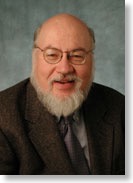
Silicon Flatirons will host events in Washington, DC and Boulder, Colorado, to honor Dale's commitment to these important areas of study. The event proceeds will support the Hatfield Professorship which honors and promotes the values that Dale has embodied during his distinguished career.
From his service at the FCC and US Department of Commerce to his professorship at the University of Colorado, Dale has demonstrated the highest ideals of service, scholarship and leadership. Hundreds, if not thousands, of technology leaders around the world have benefited from Dale's generosity of spirit and intellect. The Hatfield Professorship offers a great way to continue Dale's legacy.
I was honored to know Dale throughout my career at FCC and to work for him while he was head of OET.
Washington, DC Reception
Tuesday, March 27, 2012; 6:00-8:00 PM
The Fulbright Center
Hogan Lovells US LLP
555 Thirteenth Street, NW
Washington, DC 20004
Keynote speakers:
Kathleen Abernathy, Chief Legal Officer, Frontier Communications Corporation
Tom Wheeler, Managing Director, Core Capital Partners
Julius Genachowski, Chairman, FCC
Phil Verveer, US Coordinator for International Communications & Information Policy
To RSVP for the events send an email to: sf@colorado.edu
Cost: DC - $200
(100% of your cost will be a tax deductible donation to the Hatfield Professorship)
To make your donation to the Dale Hatfield Professorship Click Here
(To inquire about sponsorship levels email Anna Noschese at Anna.Noschese@colorado.edu)
Cellular Industry's Love/Hate Relationship with Unlicensed Spectrum
However, Thomas M. Lenard, president of the Technology Policy Institute has tried to explain its merits in a post entitled “Use the market to allocate spectrum” in another blog. While the intent of Mr. Lenard appears to be limited to spectrum related to the proposed incentive auction, the language in Section 104 would have made any future new unlicensed spectrum nearly impractical regardless whether it was exclusive unlicensed spectrum in the incentive auction spectrum or even secondary/“junk” spectrum use such as for Wi-Fi or U-NII.

AT&T said the number of connections to its Wi-Fi network nearly tripled year-over-year in the third quarter to 301.9 million. AT&T also said that the amount of data on its Wi-Fi network in the quarter more than doubled from the year-ago period.
The statistics reflect not only AT&T's growing use of Wi-Fi offloading for its cellular networks but also the wider trend within the industry to use Wi-Fi as a tool to manage mobile data traffic. Indeed, AT&T said that users are now making around 100 million Wi-Fi connections per month, more than the total number of connections made in all of 2009 and five times the total number of connections made in 2008. For now at least, neither AT&T nor any other U.S carrier counts Wi-Fi usage toward a subscriber's monthly data allotment.
AT&T's Wi-Fi hotspots now number 29,000 across the country, and AT&T said hotel locations account for approximately 40 percent of the carrier's total Wi-Fi network traffic.

In a sure sign that the cellular industry is getting serious about Wi-Fi, telecom networking giant Ericsson is buying BelAir Networks, adding its high-performance outdoor hotspot technology to its portfolio, sources told GigaOM. The deal could signal a big shift in the mindset of the big wireless vendors, which have always favored their own specialized and expensive cellular technologies to meet growing mobile data demand rather than more generic but much cheaper Wi-Fi technology. ...
As smartphone data usage explodes, consumers have begun turning to home, office and public Wi-Fi to bring their handsets online, taking advantage of fast speeds while bypassing the data caps on their mobile plans. There are some exceptions, such as AT&T, but most U.S. mobile operators have been reluctant to incorporate Wi-Fi directly into their networks, preferring instead to keep customers on their 3G and 4G networks, where they can collect data revenues and maintain control of the network connection. With big vendors like Ericsson on board, though, that attitude could be changing.
While your blogger was responsible for bringing a total of 5234.5 MHz into unlicensed use through the proposals he drafted and the decisions he helped draft in Dockets 81-413 and 94-124, he does not see unlicensed as a panacea for all the world’s spectrum problems. Exclusive licensed and unlicensed band both have positive points and both contribute towards an efficient telecom infrastructure.
It is unfortunate that many on both sides view the choice between licensed and unlicensed as a zero sum game with respect to the long term interests of the cellular industry. The continuing industry interest in Wi-Fi shows that the truth is more complex.
Survey: Major Wireless Developments 9/10 - 9/11 by Ari Fitzgerald & Mark Schneider
Ari Fitzgerald
Mark Schneider
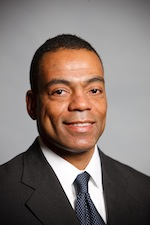

The paper was presented originally at the Practising Law Institute’s 29th Annual Telecommunications Policy & Regulation Institute publication in December 2011. Long time readers may recall that we have written about this event before in this blog. PLI is a nonprofit group that charges high (>$1000) prices for both attendance at its events and copies of the material presented. There is nothing wrong with this so far.
However, PLI events get ALL the “movers and shakers” from high FCC leadership, e.g. commissioners and bureau/office chiefs, who give presentations to the honchos of industry and K Street firms without making the same information available to the public. I have previously suggested to FCC that if these presentations are prepared with federal resources they should be made available to the public and if PLI is selling videos of the presentations, the FCC should demand copies of the presentations by FCC officials as a precondition for their presentations. Such videos should then be posted for the public within a few days of the PLI event.
On the FCC website I can only find the text of Comm. McDowell’s presentation for the 2011PLI telecom event and nothing for the other FCC presenters. There are, however, copies of Chmn. Kennard’s presentation in 1997 and 1999, Comm. Tate’s presentation in 2008, Chmn. Hundt in 1997, Comm. Copps in 2006, Former WTB Chief Muleta in 2003, etc. Thus there is precedent for making the presentations public, but no consistency.
Also, NTIA Chief Strickling made public his remarks at the 2011 PLI telecom event.
So if you want to hear public officials speak on telecom policy, you can sign up now for the 2012 PLI telecom event on December 6-7 for a mere $1,595.00 OR, FCC could adopt the policy advocated above that the presentations by public officials about the public business should be made public within a few days.
Meanwhile, kudos to Comm. McDowell and NTIA’s Strickling for making their presentations public along with Ari Fitzgerald and Mark Schneider for making their thorough review available to those of us who do not work for or have not hired a K Street law firm, e.g. the “99%”.
Is the Cellular Industry "Tone Deaf"?
Visit msnbc.com for breaking news, world news, and news about the economy
Yesterday afternoon, a NYC area college classmate sent me a link to a post entitled “.Wild Night at Philharmonic After Phone Interruption” from the WQXR Blog.
Last night, in one of the quietest parts of the final movement of a gorgeous New York Philharmonic performance of Mahler's Ninth, a cell phone started ringing ... and ringing, and ringing, and ringing. Alan Gilbert, who was on the podium in Avery Fisher Hall, glared in the direction of the phone, but it kept right on going. Then, the music got louder, and we all assumed that whoever owned the phone had done something about it. But minutes later, when the music got softer again the phone was still going (an iPhone marimba ringtone, which sounds like this):
So Gilbert stopped the performance. He then turned around and indicated that the phone should be turned off. It continued. The conductor then said to the phone’s owner, who was sitting in the front, “You have a phone... Fine, we’ll wait.” And we did, with audience members standing up, pointing in the direction of the offender, and shouting things like “Throw him out!” When the phone was finally silenced, Gilbert turned to the audience to apologize.
As of the posting of this item here, the WQXR Blog had 159 comments on this event - not many praising the cellular industry. One of the comments (#322191) stated,
“It's about time someone took a stand on cellphone protocol. What is so hard about turning it off when requested at a concert. I'm surprised no one has invented a way to check for all cellphones turned on. BRAVO Mr. Gilbert!!!!! I applaud your actions!”
The picture at the top of this post is from yesterday’s NBC Nightly News which did a piece on the event. But the incident has gone viral on the Internet! The Google search at right shows “About 1,440,000 results” on the incident - although a few of those are actually unrelated due to quirks of searching on Google.
On December 27th, your blogger posted “Some Possible New Year's Resolutions for the Cellular Industry” which included “Social harmony and cell phone use” as item #2. This built on a February 2010 post entitled “Cellphones and Interpersonal Friction”. The 2/10 post, for example, described the Japanese “Manners Mode” built into every cell phone sold in Japan that makes it easy and uniform to disable ring tones - hit the # key! This was not a Japanese government mandate, rather a voluntary standard of the Japanese cell phone industry. Since basically the same suppliers market cell phones in Japan as in the US, one would think that it would be possible here also.
The cell phone industry is united against legalizing jamming, but seems unable to do anything about antisocial cell phone usage that inevitably leads to interest by concert halls and restaurants in cellular jamming. As previously stated here, French national law explicitly permits cellular jamming in concert halls. While jamming in such urban locations inevitably will cause other problems and is thus a bad idea (as opposed to jamming in isolated maximum security prisons where the geometry is very different), there seems to have been little interest in the cellular industry in alternative approaches to minimize the antisocial aspects of cell phone use.
The cell phone industry is usually a positive contributor to US society and the US economy. But it continues to have some blind spots as outlined in the previous New Year's Resolutions post here. Maybe it should address them? Maybe FCC leadership should politely point out these issues from time to time and mention the possible impact of neglect?
I have asked CTIA to comment on the “Mahler incident” and will promptly post any reply.
UPDATE
As you can see from the above YouTube video from a concert in Slovakia, the Mahler/marimba incident was not unique. We patiently await comment from the cellular industry about these incidents and what they are doing to decrease the incidence rate. We know the US cellular industry hates all jamming, any other ideas?
"Broadcast TV is living on borrowed time" -- Justice Alito
JUSTICE ALITO: Well, broadcast TV is living on borrowed time. It is not going to be long before it goes the way of vinyl records and 8 track tapes.
MR. PHILLIPS: I hope that -- I'm sure my client is not thrilled to have you say that.
JUSTICE ALITO: Well, I'm sure -
(Laughter.)
JUSTICE ALITO: I'm sure your clients will continue to make billions of dollars on their programs which are transmitted by cable and by satellite and by internet. But to the extent they are making money from people who are using Rabbit ears, that is disappearing. Do you disagree with that?
MR. PHILLIPS: No, I -- it would be -- you know, obviously not, because that's why we are not uniquely accessible or uniquely pervasive.
JUSTICE ALITO: Yeah. So why not let this die a natural death? Or why do you want us to intervene -
(Laughter.)
The two mentions of “laughter” in the transcript clearly show the crowd was enjoying this line of discussion at the usually staid Supreme Court. Perhaps only a judge with lifetime tenure - as long as Newt Gingrich or Rick Perry don’t change the Constitution - could say something like this. FCC commissioners and members of Congress are clearly too intimidated by the broadcast lobby to even raise the issue.
Consider the following goal statement from the National Broadband Plan:
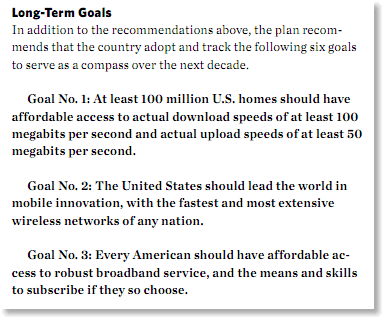
This establishes as a long term goal that “at least 100 million U.S. homes should have affordable access to actual download speeds of at least 100 megabits per second.” Essentially Title II universal service goes from being a “black phone” to 100 Mbps broadband for at least a third of the population. For reference, over-the-air HDTV is 18 Mbps per channel although a given video signal is less since the bandwidth usually is shared with more than 1 video stream. If everyone in an area had 100 Mbps service with “affordable access”, why do we need over-the-air TV with “rabbit ears”?
Now NAB would quickly say we need “rabbit ears” to serve poor people who can’t afford MVPD. This assumes that MVPD has the same pricing model it has today which of necessity would change in the NBP-envisioned universal service. For example, the money raised from recycling the VHF and UHF spectrum, “digital dividend” in Eurospeak, could be used to endow low cost or free broadband service to the economically disadvantaged. Alternatively, MVPDs could switch to a “freemium” pricing model with present over-the-air channels free and charge for the traditional cable channels.
What is truly amazing is the unwillingness of public officials, except Justice Alito, to talk about these long term options.
FCC Proposes New 78 - 81 GHz Rules: "It was the best of times; It was the worst of times"
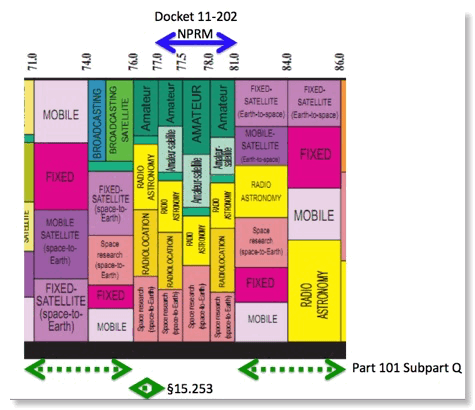
On December 20, 2011 the FCC released the NPRM in Docket 11-202 dealing with adopting rules to permit non-Federal Government use of the 78-81 GHz band for the first time. (My thanks to Mitch Lazarus at FHH CommLawBlog who made a post on this action before I noticed it.)
For reference, the amount of spectrum involved here is 3 GHz of bandwidth, or 6 times what is being sought for new mobile use in the national Broadband Plan. So if this band ends up only being used for the requested use and some passive scientific uses, that is a lot of spectrum “off the table”.
Normal (non experimental) commercial use of a band requires two basic FCC actions: An allocation which is consistent with the basic desired use (e.g. fixed or mobile) and service rules that describe the terms of use (e.g. bandwidth, power, modulation, etc.) and eligibility for a license or perhaps makes the band unlicensed. All spectrum up to 275 GHz has allocations of some kind. But the service rules at the upper end of the spectrum are spotty. As shown in the top chart, 71-76 and 81-86 GHz have service rules for “licensed light” fixed service use in Subpart Q of Part 101. 76-77 GHz is used for automotive radars authorized under §15.253. There is another Part 101 Subpart Q band at 92-95 GHz, but these are the only service rules above the 57-64 GHz unlicensed band of §15.253.
Real investors in the real world hesitate to invest in products that need non routine FCC approvals. Thus there is 120 GHz technology developed in Japan that was used in the Beijing Olympics and has no counterpart in the US, even though the US has been the leader in millimeter wave technologies:
Uncertainties in FCC spectrum policies discourage this type of R&D investment and affect US technological competitiveness.
This NPRM was stimulated by the development by Trex Enterprises Corporation of an “foreign object debris”/“FOD” detection system to meet an urgent FAA requirement for airports. The “foreign” in FOD does not mean non-US, but rather any debris on a runway that could cause damage to aircraft such as nuts and bolts and tools. The NPRM would permit use of the Trex system and similar systems.
The key issues in the NPRM are stated in para. 3 as:
“(W)e seek comment on a proposal by Trex to amend Part 90 of our rules to permit non-Federal radiolocation operations, including Trex’s FOD radar detection technology, in the 78-81 GHz band and to impose a specific assignment limitation to protect radio astronomy service operations in this band from harmful interference. We also seek comment on whether we should instead amend Part 15 to open the band to non-Federal radiolocation operations (including FOD detection devices) on an unlicensed basis. And we seek comment on whether we should amend Part 90 to permit use of the 78-81 GHz band by FOD detection devices at airports on a licensed basis, while permitting other uses on an unlicensed basis pursuant to Part 15 of our Rules.”
Kitt Peak National Observatory AZ
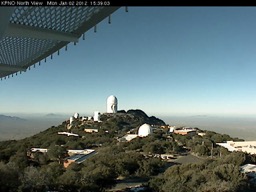
The radio astronomy community and the passive sensing community that both have allocations in and near their bands did a major study of their spectrum management issues in 2010 that are published in a report front eh national Research Council entitled Spectrum Management for Science in the 21st Century. Pages 186-187 of this report explore the feasibility of “cooperative spectrum sharing” as a way to share spectrum between active users and the scientific passive users in a “win/win” way.
The glib talk in the NPRM of possibly using this 3 GHz wide band only for ground focused FOD detectors at a few hundred airports and ruling out any other transmitters in this band to protect a handful of radio astronomy locations indicates perhaps a perfection of classic spectrum management philosophy, but is out of touch with modern thinking in spectrum management where one tries to use dynamic spectrum access techniques to get the most out of every Hz for both its contribution to GDP and for it scientific potential. Classic spectrum management was a “zero sum game” for participants. At these upper frequencies in virgin bands, we can do much better.
Your blogger would like to work with interested parties to prepare comments in the next month that use this band for multiple uses and encourage the capital formation needed for technical innovation. If interested, contact me here.
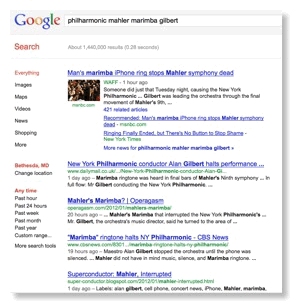

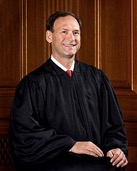
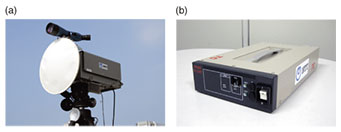



![Validate my RSS feed [Valid RSS]](valid-rss-rogers.png)

